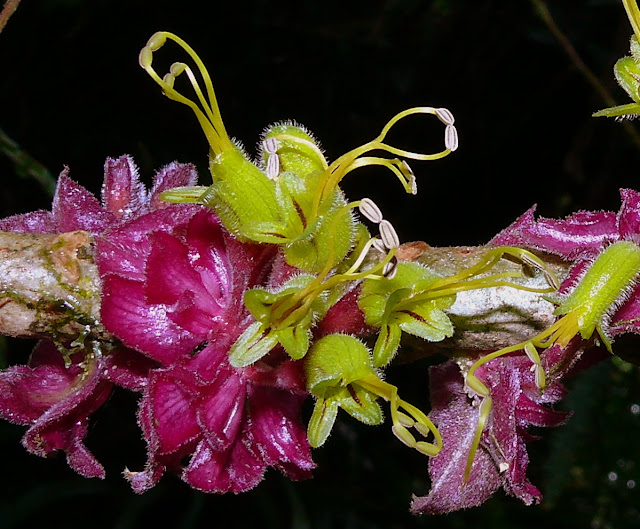Amorphophallus dactylifer season in Laguna is peaking now

Amorphophallus dactylifer , a rather widespread Philippine species, is now creating quite a display again. And fortunately, this is one of the more ubiquitous species to be found in my home province of Laguna although unlike, A. paeoniifolius , it's not as weedy and not found in cultivated areas. Contrary to what most would think, these aren't flowers, but inflorescences. The real flowers are much simplified in form, tiny, and hidden in two separate zones inside the vase-like spathe. The tallest inflorescence observed was a tad taller than 6 feet. Since all the examples shown here were found in the morning and noon, none were exchanged in the stinkfest that the species is also known for. Rather, the odor within the spathe is actually sweetish. Many were found in quite dense shade; I frequently see the vegetative versions in dark situations flopping to their sides from yearning for some sun. Now here's an interesting one. The developing inflorescences are t



